Self-imposed lockdown in the animal world: A glimpse into the life of a family of breeding hornbills
China is home to five hornbill species: Great Hornbill, Rufous-necked Hornbill, Wreathed Hornbill, Oriental Pied Hornbill, and Austen’s Brown Hornbill. They are restricted to tropical forests of southwest Guangxi, south & southwest Yunnan and southeast Tibet. Poaching and forest loss have greatly decimated their populations in China. We know little about how these majestic birds are faring, and knowledge about their breeding process is limited to basic observations made in the 1970s.
To save these majestic birds from extinction, the Kadoorie Conservation China Department (KCC) has been working in tandem with Guangxi Xidamingshan Provincial Nature Reserve and Yunnan Tongbiguan Provincial Nature Reserve. Our simultaneous population survey of Oriental Pied Hornbill at Xidamingshan in 2009 – first of such survey dedicated to these majestic birds in China – found that the wildlife sanctuary is home to about 50 individuals.
Then we took a step further to document the breeding behaviour of five families of Oriental Pied Hornbill who produced nine young in 2014 and 2015. These missing pieces of information are important to understand where they breed and what they feed on to formulate effective conservation strategies.
Here is the story of one of the hornbill pairs, known as A2014.

The star of the show is this father hornbill.
Self-imposed lockdown
The mother hornbill of A2014 entered a sizable tree hole, nine metres off the ground, in a giant tree as both maternity home and nursery. Then she sealed its entrance with a plaster of mud, provided by her partner mixed with her own droppings, until no more than a narrow slit is left open. For about three months, she will stay hidden in this shoebox, completely dependent on her partner as the breadwinner, until her chicks are fully fledged and ready to fly. This unique breeding habit is believed to offer extra protection from predators and the elements.
For 40 days, we took turns to watch over the tree hole to see what kinds of food the father hornbill passed through the crack to feed the hungry mouths.

Can you spot the tree hole?

Our tent set up makeshift shelter on a hillside to get level with the tree hole

We experienced first-hand how well-insulated from the heat the hornbill’s tree hole must be. At 1pm, the temperature reached a scorching 39.4 degree Celsius inside our tent.
A labour of love
It is not an easy job to provide for the whole family. It meant three “grocery runs” every hour, day in and day out for as long as his partner and young are still under “lockdown”. In one trip, the father hornbill came home with a whooping 132 pieces of food that is regurgitated from his crop, a body part used to store food temporarily.
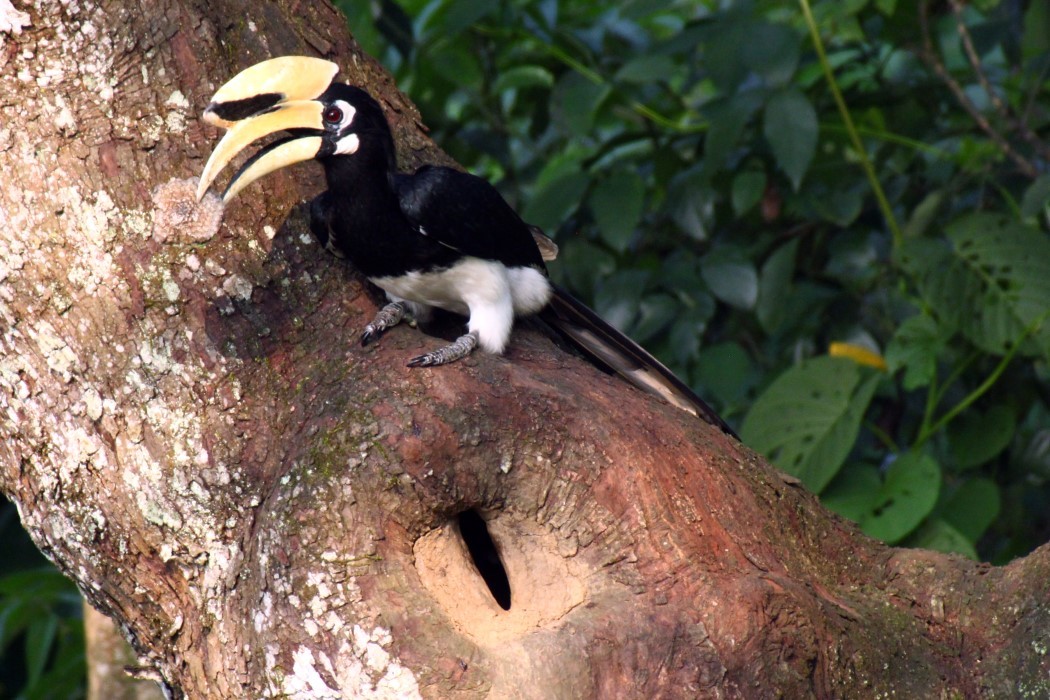
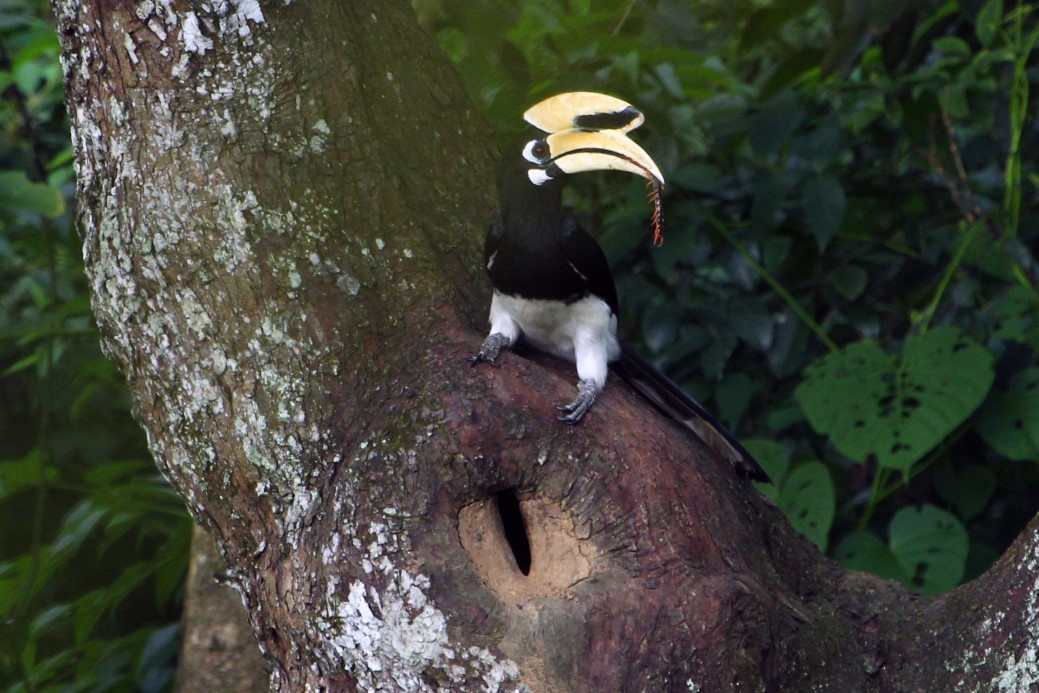
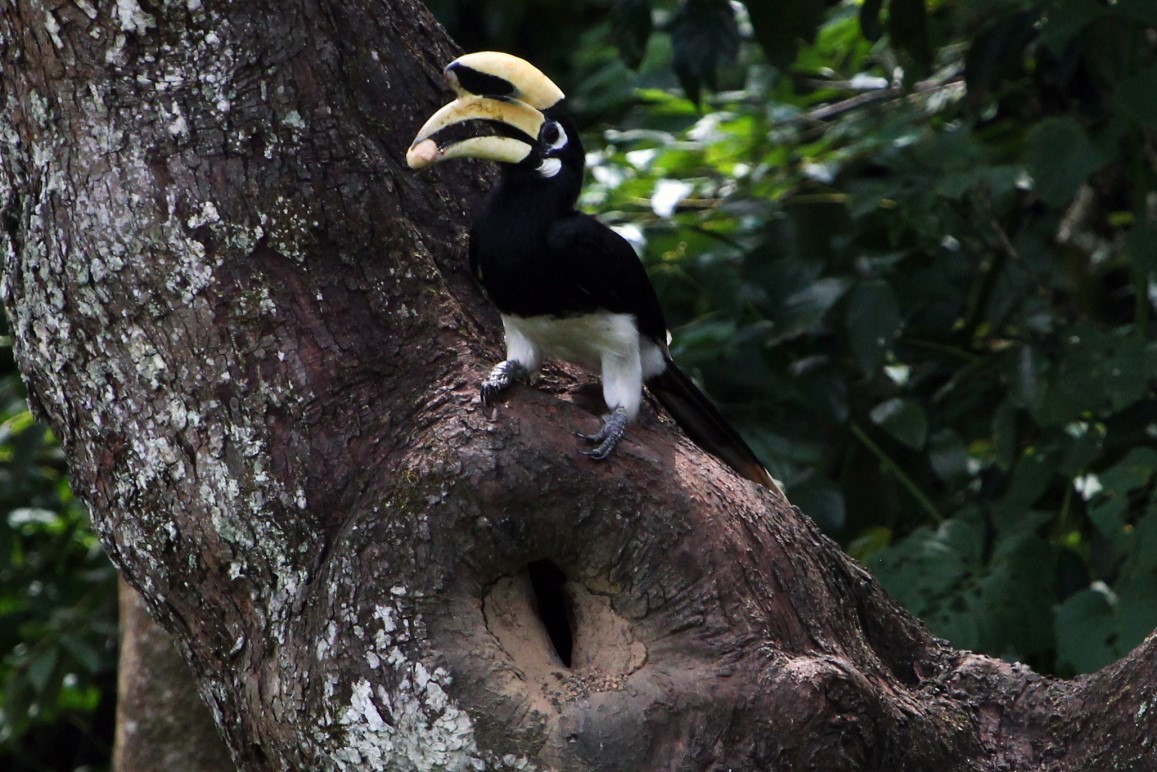
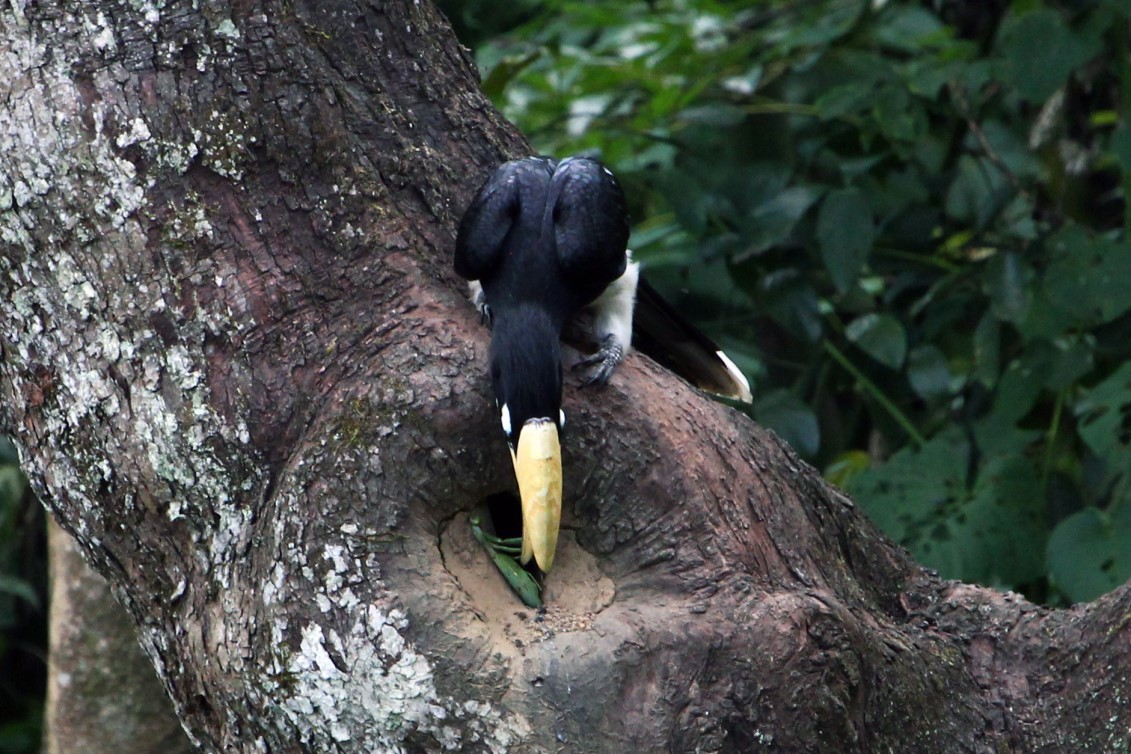
The father hornbill went to great lengths to help his family achieve a balanced diet. He served wasp nests, centipede, figs, praying mantis amongst many other things he harvested from the neighbourhood.
But inserting food through the crack of their temporary home can be a headache, especially when it’s a snail with a large hard shell.
Our study found that the hornbills fed mostly on fruits during the breeding period, which is equal to 80 per cent of their total diet. Although they consumed small to medium sized fruits the most, large figs were also very important to their menu (10 per cent of total diet). We also observed that the father hornbill hunted mostly invertebrates, coming home with a bat on one occasion only.
Inside the nest
For 90 long days, the narrow slit in the tree hole is the only source of light and only access to the big wide world for the mother hornbill and her chicks, and also our only gateway to the life under “lockdown” for the family.
Early July
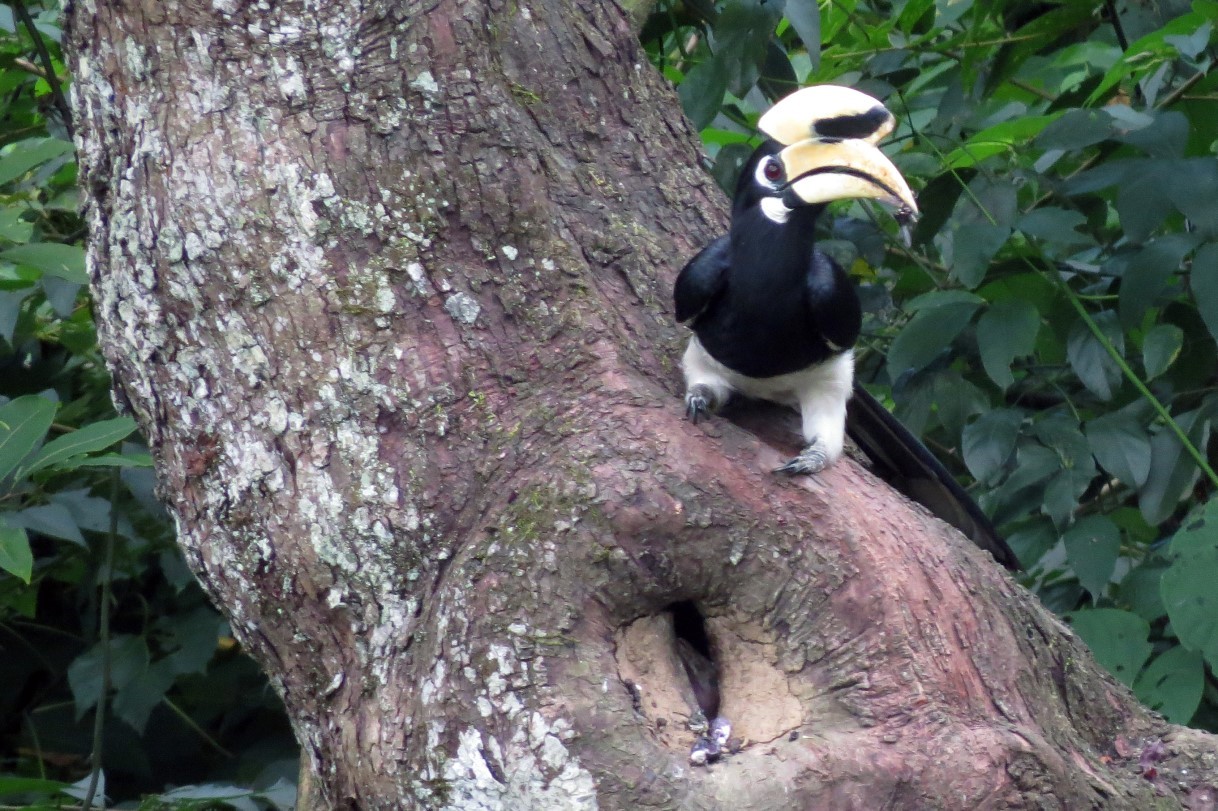
We caught a precious glimpse of a featherless chick, which has yet to open its eyes, through the opening in the tree hole. Its excrements stain the bottom of the opening of the tree hole, awaiting a proper clean-up by the father hornbill.
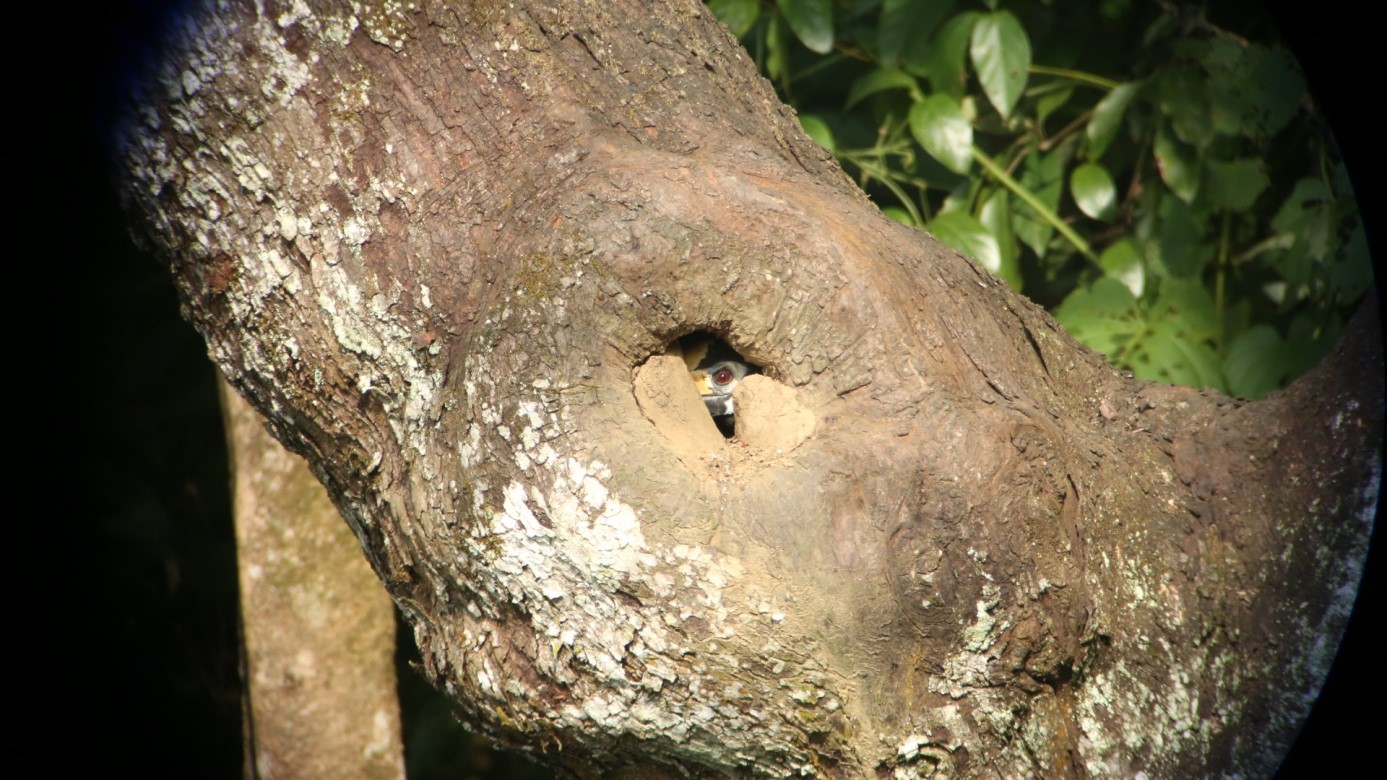
Here is the mother hornbill, just as curious about us as we are of her.
Early August
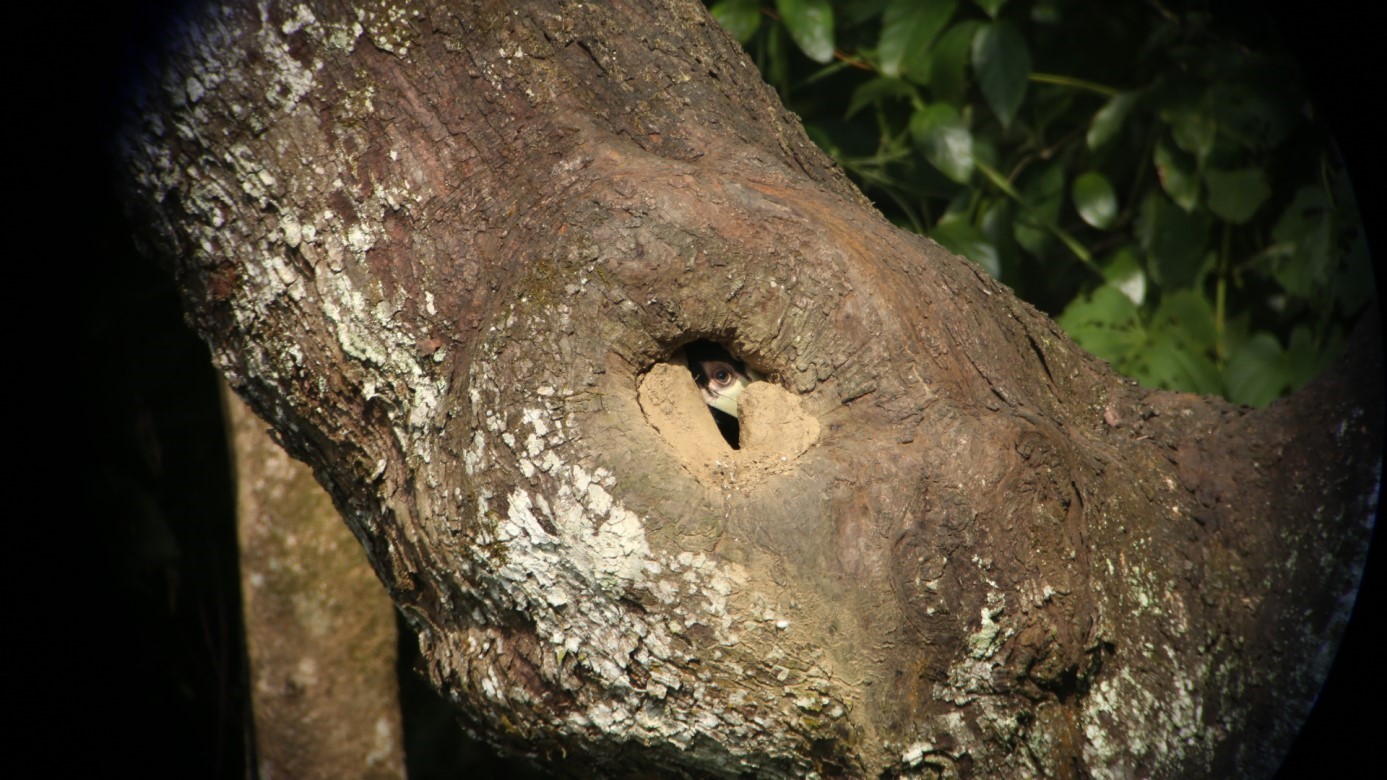
The young hornbill, which has grown up a little, eyes the outside world inquisitively.
Breaking free
At long last, the two chicks grew all their feathers and were ready to beat their wings for the first time. The mother hornbill broke the mud plaster apart and left the confines of the tree hole first, followed one by one by her two fully-fledged chicks.
.jpg)
.jpg)
The moment when the mother hornbill got a taste of fresh air and stretched her wings.
.jpg)
.jpg)
Three minutes later, the two young ones made their grand appearance and flew to a nearby branch to take in their surrounds.
Following up
Our work did not end there. After the family left, we recruited a team of tree climbers who hoisted themselves up three of the tree holes to take some measurements. We found that the trees where the nests were located are 13m to 18m tall, with an average diameter at breast height of 74cm. And their shoebox homes were 77 to 103cm tall and 30 to 50 cm wide.
We believe that the forest supplied sufficient food for the hornbill families, but the lack of big trees with large tree holes limited the population growth of hornbills. It is recommended to strengthen law enforcement in the nature reserve, explore the use of artificial nest boxes in the short run, and look into the feasibility of planting fast-growing, large-sized native tree species in the long run.
.jpg)
.jpg)
.jpg)
Without the help of tree climbers who volunteered their services, we would not have been able to complete our study.

All the worldly possessions left behind inside the tree hole by the hornbill family: part of the mud plaster of the tree hole entrance (left) and old flight feathers belonging to the mother hornbill (right).
For more details of the research, visit: http://dwxzz.ioz.ac.cn/ch/reader/view_abstract.aspx?file_no=20078&flag=1


